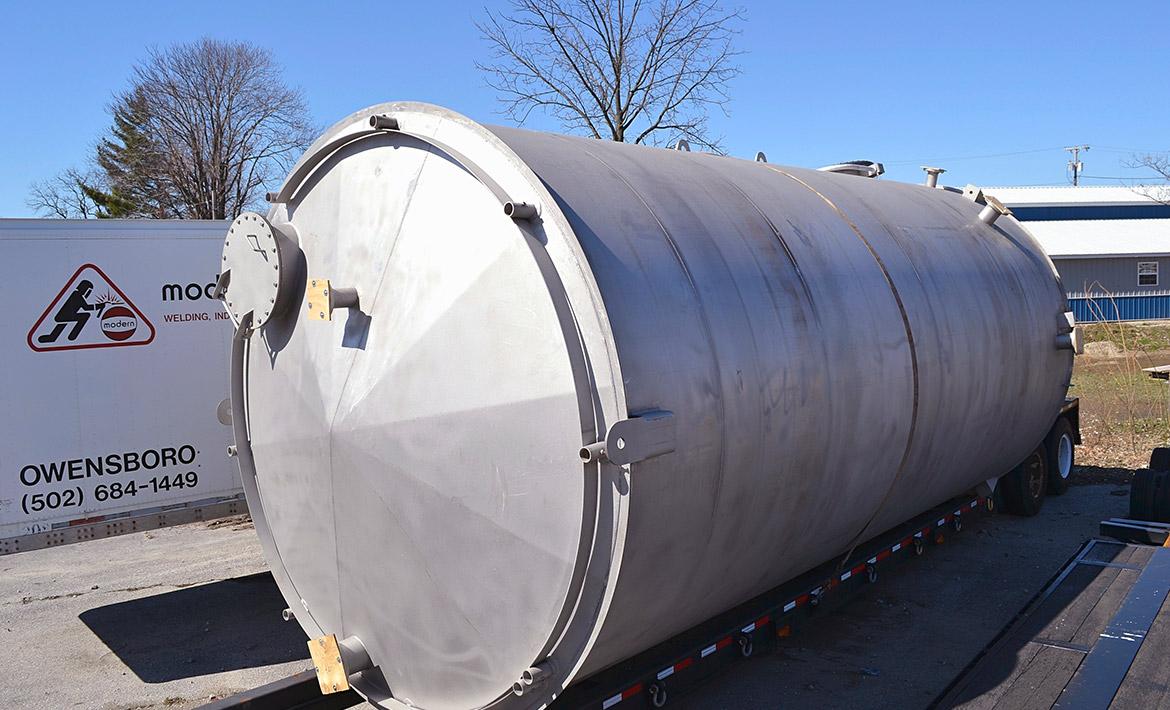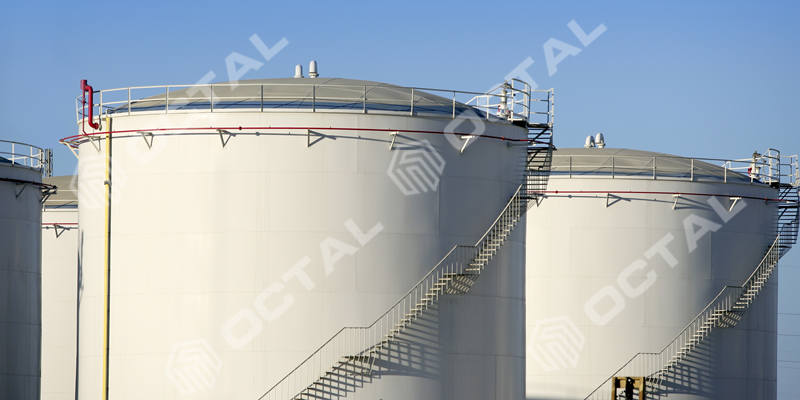API 650 Welding Inspection: Fundamental Steps for Maintaining Structural Reliability
Wiki Article
A Step-by-Step Check Out the Installation Refine of Welding Evaluation Techniques
Welding examination is an important process that assures structural stability and safety. The installment of assessment techniques includes numerous systematic actions, each integral to accomplishing reliable results. From preparation and tool choice to performing non-destructive and visual examinations, each phase demands mindful attention. Comprehending these treatments can greatly improve top quality assurance in welding jobs. What obstacles arise in carrying out these strategies, and how can they be successfully dealt with?Comprehending the Significance of Welding Inspection
Welding inspection is an essential component of guaranteeing structural stability and safety and security in construction and manufacturing processes. This technique includes reviewing bonded joints for defects, guaranteeing that they satisfy particular requirements and guidelines. By methodically determining weld top quality, assessors can recognize concerns such as splits, gaps, and insufficient blend, which can jeopardize the stamina and longevity of frameworks.The value of welding examination expands past instant security issues; it helps avoid costly failures and possible dangers in the lengthy term. Efficient evaluation techniques foster compliance with sector requirements, consequently enhancing the overall integrity of bonded elements. Furthermore, a durable examination process adds to maintaining the online reputation of suppliers and home builders, as it assures customers of the high quality of their projects. Inevitably, comprehending the significance of welding inspection is vital for advertising safe building and construction methods and ensuring the long life of vital infrastructure and items.
Picking the Right Devices for Evaluation
When picking the proper tools for assessment, it is necessary to consider the details needs of the welding process and the materials included. Various examination techniques, such as visual, ultrasonic, and radiographic screening, necessitate distinct devices customized to their unique demands. For aesthetic examinations, tools like amplifying calipers and glasses are crucial for examining weld top quality. Ultrasonic screening requires specialized devices efficient in sending and receiving audio waves to detect internal defects. Radiographic screening, on the various other hand, makes use of X-ray or gamma-ray resources along with delicate movie or electronic detectors to disclose inconsistencies.
Additionally, personal protective equipment (PPE) is important to ensure the security of examiners throughout examinations. Choosing the right devices not only improves the accuracy of evaluations however likewise adds to the overall integrity and safety of the welding project. Consequently, an extensive understanding of offered tools and their applications is necessary for reliable welding assessment.
Planning for the Inspection Refine
Before launching the inspection procedure, it is necessary to establish an extensive plan that outlines the extent and goals of the evaluation. This plan should consist of particular criteria that specify what constitutes appropriate high quality in the welding work being evaluated. Determining the relevant codes and requirements is important, as they will certainly assist the inspection standards and approaches.Additionally, workers involved in the examination should be adequately educated and certified in welding assessment techniques to ensure reliability and accuracy. A list can be advantageous in arranging the various elements of the inspection, ranging from tools readiness to ecological problems that could impact the assessment.

Logistical considerations such as scheduling, offered sources, and interaction in between group participants must be resolved. By preparing methodically, assessors can boost the performance of the assessment and guarantee that all essential factors are duly thought about before waging the evaluation itself.
Conducting Visual Inspections

Carrying out visual inspections is an essential action in the welding assessment process, calling for cautious preparation to assure efficient evaluation. Assessors should recognize with crucial problem indications that can indicate potential problems in weld quality. By concentrating on these elements, one can boost the general integrity of the assessment outcomes.
Getting Ready For Visual Inspection
Aesthetic inspection functions as a crucial initial step in the welding assessment process, ensuring that any kind of prospective flaws are identified early (API 650 Welding Inspection). Appropriate prep work is important for reliable visual evaluation. Assessors need to begin by reviewing appropriate documents, consisting of welding procedures and requirements, to comprehend the project demands. They must gather required devices, such as amplifying glasses, flashlights, and proper individual protective equipment (PPE) A thorough examination of the inspection area is vital; inspectors must verify it is cost-free and tidy of obstructions. Additionally, it is very important to develop optimal lights problems to enhance exposure of welds. By taking these preparatory actions, examiners can create a setting favorable to determining inconsistencies and assuring the honesty of More Help the welded frameworksKey Defect Indicators
A complete understanding of crucial issue indications is important during visual evaluations to ensure the high quality and safety and security of welded joints. Inspectors must concentrate on specific indications such as cracks, porosity, damages, and insufficient blend. Fractures might show up as sharp lines and can endanger structural honesty. Porosity shows up as small openings that can weaken weld stamina. Undercuts, which are grooves along the weld edge, can lead to stress focus. Insufficient combination indicates that the weld steel did not appropriately bond with the base material, resulting in a weak joint. By methodically determining these problems, assessors can establish compliance with sector requirements and enhance the total dependability of welded frameworks, ultimately adding to much safer functional conditions.Implementing Non-Destructive Examining Methods
 browse around this web-site
browse around this web-site Countless non-destructive screening (NDT) techniques are important to guaranteeing the stability of welded frameworks without compromising their functionality. These methods enable assessors to assess weld quality and detect defects without creating damages to the products being examined. Usual NDT methods consist of ultrasonic screening, radiographic testing, magnetic bit testing, and color penetrant testing. Each method offers a specific objective, addressing different kinds of imperfections such as splits, porosity, or incomplete fusion.
Implementing NDT strategies calls for a systematic method, starting with choosing the ideal technique based upon the products and the nature of the weld. Educating personnel in these methods is important for accurate results. Furthermore, establishing clear procedures and criteria guarantees consistency throughout the examination procedure. By integrating NDT into the welding inspection workflow, organizations can boost the integrity of their products while decreasing potential threats linked with structural failures. This positive method inevitably contributes to preserving safety and quality criteria in welded buildings.
Assessing and documenting Assessment Results
Reliable paperwork and analysis of examination outcomes are vital parts of the welding inspection process. Accurate records of examination searchings for function as a reference for quality control and conformity with market standards. API 650 Welding here Inspection. Examiners must use structured types or electronic platforms to log details such as the sort of weld, assessment techniques utilized, and any type of discrepancies identified during the examinationDetailed evaluation is crucial when data is accumulated. This involves comparing outcomes against developed requirements to recognize trends or reoccuring problems. Statistical tools might be used to measure flaws and evaluate their influence on general weld top quality.
Furthermore, reliable communication of searchings for to pertinent stakeholders is vital. Records and recaps should be clear and concise, highlighting vital insights and referrals for restorative actions. By methodically recording and evaluating inspection outcomes, organizations can foster constant enhancement in welding techniques and boost product integrity.
Often Asked Concerns
What Certifications Are Required to Come To Be a Welding Examiner?
To end up being a welding examiner, one normally needs appropriate certifications such as AWS CWI, along with experience in welding methods, expertise of welding codes, and proficiency in inspection strategies to assure quality and safety standards.How Usually Should Welding Inspections Be Conducted?
Welding inspections need to be carried out consistently, typically after each weld is finished, and regularly throughout jobs. Variables such as project complexity, market requirements, and regulative requirements can affect the frequency of these assessments.What Is the Cost of Welding Examination Services?
The cost of welding assessment solutions varies considerably based on factors such as project location, size, and complexity. Typically, prices range from $100 to $150 per hour, with extra fees for specialized screening and qualifications.Exist Certifications for Welding Inspectors?
Yes, there are various qualifications for welding inspectors, consisting of those supplied by the American Welding Society (AWS) and the International Institute of Welding (IIW) These accreditations ensure assessors have the essential abilities and expertise for effective assessments.
Exactly how Do I Pick an Examination Service Provider?
To select an assessment service provider, one ought to evaluate qualifications, experience, industry track record, and consumer reviews. In addition, contrasting solution offerings and rates can help assure the picked provider fulfills particular task needs properly.Additionally, employees entailed in the assessment needs to be appropriately trained and licensed in welding inspection methods to ensure integrity and accuracy. Conducting aesthetic examinations is a crucial step in the welding inspection procedure, calling for mindful prep work to assure efficient evaluation. Visual examination offers as a critical first step in the welding assessment process, ensuring that any kind of prospective issues are recognized early. Efficient documents and analysis of examination outcomes are crucial components of the welding assessment procedure. Welding evaluations must be performed routinely, typically after each weld is finished, and occasionally during jobs.
Report this wiki page